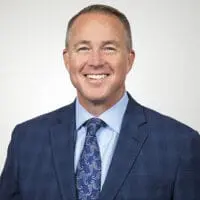Publication
Insurance Claims and the LA Fires
Insurance has always been a critical backdrop in risk analysis. This is because when buying insurance, “an insured usually does not seek to realize a commercial advantage but, instead, seeks protection and security from economic catastrophe.”1 Insurance is in place for fundamental risk and loss but is also underwritten for worst-case, catastrophic events, like the California wildfires that devastated Los Angeles in January of 2025.
Insurers have claimed these wildfires have caused an unwelcome hit and that insurers are facing thousands of claims that could cost them over $30 billion.2 However, these insurers are regulated and required to underwrite insurance policies that are consistent with the financial capacity to cover claims by all policyholders. Insurers, in other words, promise they cannot be bankrupted by overwhelming claims arising from a catastrophic event. The insurers’ financial predicament is no excuse.
What does this claimed predicament, nevertheless, mean for policyholders making claims arising from a catastrophic event like the LA Fires? Often times, it means undue scrutiny, delay, and unfortunate litigation over replacement coverage and disputes concerning the claim’s value. Moreover, in a time when insurers will be inundated with claims for billions of dollars in total losses, those claims on the periphery are likely to face much higher scrutiny by the insurers. This scrutiny, however, must be reasonable and contractually justified at every step of the way. Fair claims handling is also statutorily required and enforced in a majority of jurisdictions.3
United Policyholders has put together claim guidance to help insureds navigate the arduous claims process.4 They recommend thorough documentation, politeness, and caution regarding recorded statements. United Policyholders also provides resources through the California Department of Insurance if there is any concern that an insured is being treated unfairly.
Despite the concern that LA Fires insurers will force their insureds to jump through a myriad of hoops to get the benefits they paid for, there has not been as much concern that the insurance companies cannot afford to pay for those claims.5 The focus is, instead, on whether California’s FAIR plan can bear the burden of being the back stop when losses exceed what insurance coverage provides.6 But in the event that FAIR fails to supplement available coverages, the prevailing wisdom (and legitimate fiscal concern) is that the other insurance companies would step in, cover the losses, and ultimately pass those costs on to future customers in the form of increased premiums. Some homeowners have even resorted to modular homes as a more cost-effective means of replacing houses on a more expedited basis than a total rebuild burdened by less dependable supply chains for traditional reconstruction.7
Consider also that wildfires only recently entered the insurance space as a major source of loss. Between 2017 and present, insurers have seen $67 billion in insured losses due to fire.8 Insurance companies are, by definition, risk averse, and claims adjusters are trained to find holes in coverage and to minimize the claim’s value. State Farm, a well-known and reputable insurance company, will no longer accept applications for new homeowner’s insurance in California.9 Meanwhile, perseverance and patience of policyholders may prevail against any undue scrutiny by the insurers, but dispute resolution is inevitable when delays and shoddy claims handling also prevails. Inevitably, the culprit may be financial stability because of increased risks, lack of available insurance, and overall increases in premiums due to total-loss claims.
One potential alternative is parametric insurance. Parametric insurance is designed to protect against predictable and catastrophic events like hurricanes, earthquakes, floods, and fires. This gap-type insurance may become a requirement for businesses and homeowners if the insurance market continues to flee high-risk areas.10 The problem is that parametric insurance costs significantly more than average insurance. Although it would pale in comparison to a total uninsured loss, the upfront costs for options like parametric insurance are a stark reminder of just how likely a wildfire loss is.
Looking to the future – reflecting especially on the LA Fires – the dynamics of insurance for areas impacted by catastrophic loss will inevitably change as insurance actuaries speculate about the risks and reconciling premiums and costs of coverage. For example, in Florida, another state deeply affected by catastrophic events, homeowners have seen doubling or tripling in insurance premiums.11 In addition, policyholders should keep an eye out for renewal notices or policy changes that either affect coverage or the claims submission process. This is an opportunity for policyholders to show the same scrutiny that insurers will show in handling your claims. Consider not folding on how your policies are negotiated and underwritten, and not folding on making insurers act reasonably in handling your legitimate claims for coverage.
Footnotes
-
Rawlings v. Apodaca, 726 P.2d 565, 570 (Ariz. 1986).
-
https://hbr.org/2025/01/the-la-fires-could-change-the-insurance-industry
-
See, e.g., California Code of Regulations § 2695 et. seq. (Unfair or Deceptive Acts or Practices in the Business of Insurance and Fair Claims Settlement Practices regulations).
-
https://uphelp.org/claim-guidance-publications/fire-insurance-claim-tips-for-california-residents/
-
-
-
https://www.wsj.com/real-estate/factory-homes-disaster-areas-4c5d6994?mod=Searchresults_pos1&page=1
-
https://hbr.org/2025/01/the-la-fires-could-change-the-insurance-industry
-
-
https://hbr.org/2025/01/the-la-fires-could-change-the-insurance-industry
-
About Snell & Wilmer
Founded in 1938, Snell & Wilmer is a full-service business law firm with more than 500 attorneys practicing in 17 locations throughout the United States and in Mexico, including Phoenix and Tucson, Arizona; Los Angeles, Orange County, Palo Alto and San Diego, California; Denver, Colorado; Washington, D.C.; Boise, Idaho; Las Vegas and Reno-Tahoe, Nevada; Albuquerque, New Mexico; Portland, Oregon; Dallas, Texas; Salt Lake City, Utah; Seattle, Washington; and Los Cabos, Mexico. The firm represents clients ranging from large, publicly traded corporations to small businesses, individuals and entrepreneurs. For more information, visit swlaw.com.


